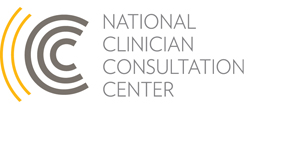Case of the Month: Initiating PrEP and Providing Appropriate Follow-Up
Case Summary
A family physician calls about a 19-year-old bisexual man interested in pre-exposure prophylaxis (PrEP). The patient is HIV-negative. He has multiple partners and uses protection, but not regularly. The patient is currently not on post-exposure prophylaxis (PEP), has no signs compatible with acute HIV, and has normal renal and hepatic function. What is the appropriate monitoring schedule if the patient decides to start a PrEP regimen?
CCC Consultant Advice
This patient is an appropriate candidate for a PrEP regimen. When initiating PrEP and in following up, the physician should continue to provide information and support toward condom use and other risk reduction strategies. Since this patient has not maintained regular condom use, the physician should remind him that adherence to PrEP and increased use of condoms will be critical, since PrEP alone, even if taken regularly, is not considered maximally safe. Stress to the patient the crucial nature of PrEP medication adherence to ensure maximum efficiency of the regimen. When adherence is poor, the regimen is ineffective in protecting against HIV.
The CDC’s guidelines for PrEP monitoring and follow-up indicate that once the patient is started on PrEP, he should return for follow-up testing every three months. Initially, it may be helpful for the clinician to see the patient more frequently to confirm HIV-negative status, assess the patient for early side effects, discuss with the patients the importance of medication adherence, and answer any other questions the patient has.
At least every three months the clinician should repeat HIV-testing and assess for signs or symptoms; repeat pregnancy testing for women who can become pregnant; provide a prescription or refill authorization of daily TDF/FTC for no more than 90 days; and assess side effects, medication adherence, and HIV acquisition behaviors.
At least every six months, the clinician should monitor creatinine clearance (eCrCL). As long as the eCrCl is greater than or equal to 60 ml/min, PrEP can be continued. If the eCrCl is declining steadily (but still greater than 60 ml/min), a consultation with a nephrologist to look at possible threats to renal health is recommended. In addition, STI testing is recommended for sexually active adolescents and adults.
Annually, the clinician should work with the patient to evaluate the need of continuing PrEP as a component of HIV prevention.
For more detailed information on PrEP and PrEP administration, see the following CDC resources:
CDC PrEP Fact Sheet
CDC PrEP Guidelines
CDC PrEP Provider Supplement
Because CCC consultations are based on information provided by the caller or clinician accessing the online consultation center, without the benefit of a direct evaluation or examination of the patient, consultations are intended to be used as a guide. They do not constitute medical advice and are not to serve as a substitute for medical judgment. This Case of the Month includes consultation based on the most up-to-date evidence at the time of its publication. To learn about current recommendations, please call one of our clinical consultation lines.
 University of California, San Francisco |
University of California, San Francisco |
